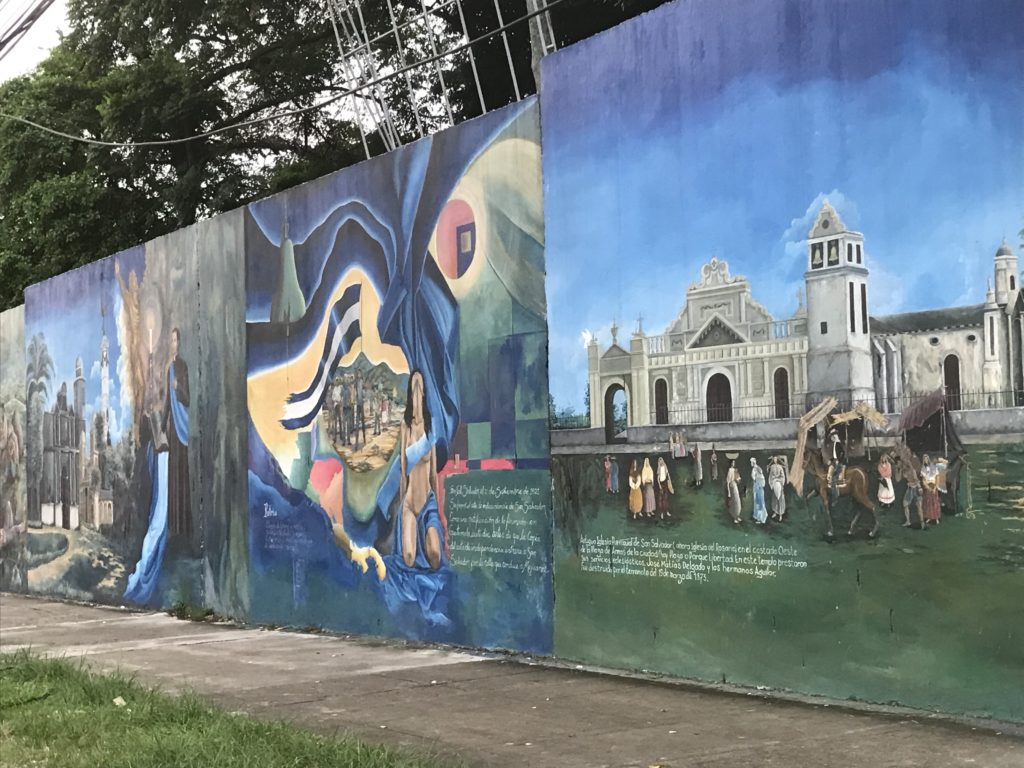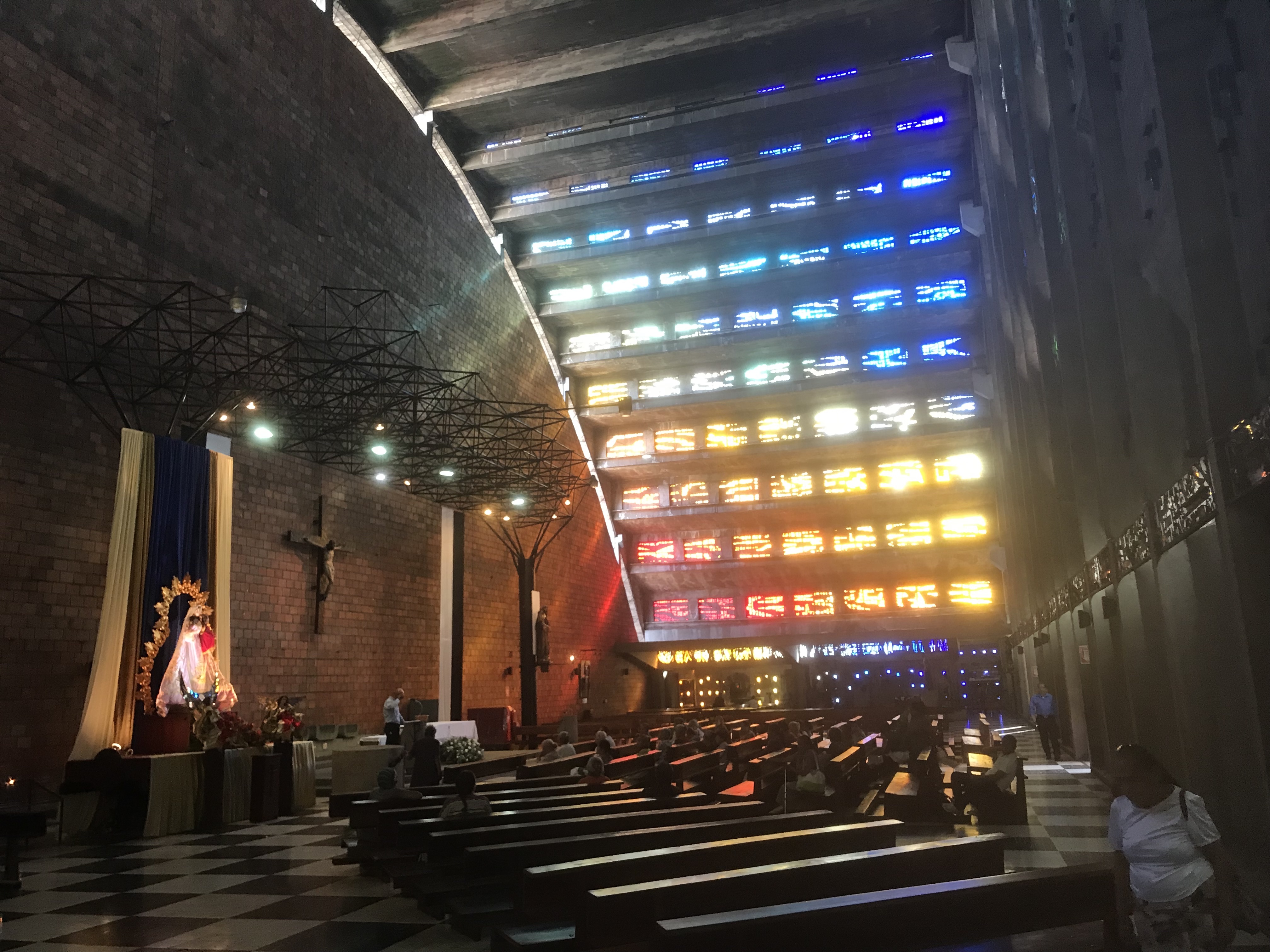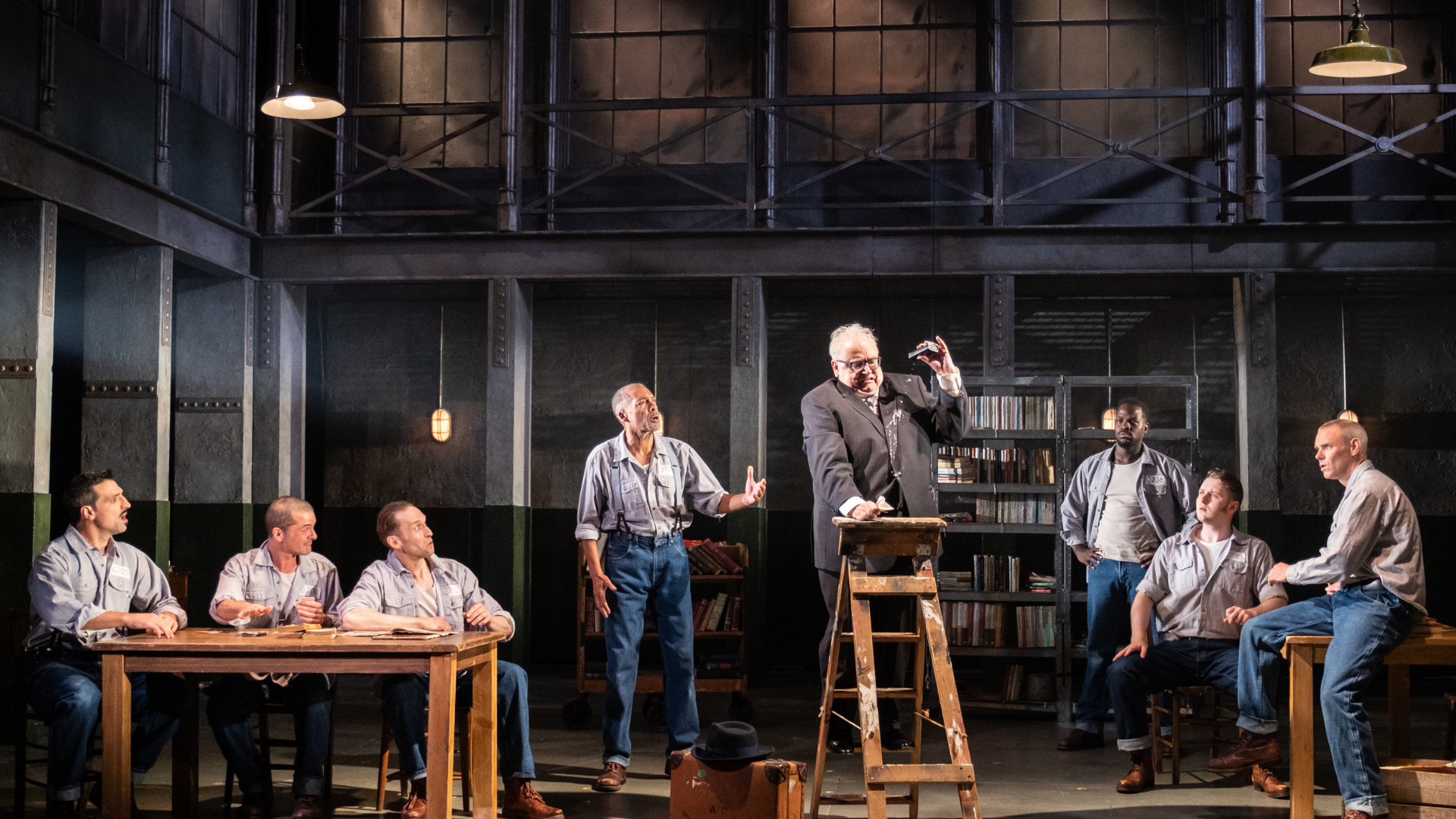During the first hours of my short visit to El Salvador I enjoyed splendid lights. It started with our landing while the sunrise was splashing on the lakes and volcanoes. And then, about an hour later inside the Rosario Church on Plaza Liberdad in the historical center of San Salvador, the capital city. The outside of this modern church built in the 60s is not appealing: some sort of bunker with a round roof. But once indoors, the light effects are astonishing thanks to the stained glasses inserted in the roof’s curvature. Blue, orange and yellow dominate the tapestry of light shining and firing up this church simply designed as an arc around the altar for a liturgy in the middle of the people.

The church also contains a bas-relief representing Oscar Romero, the archbishop of San Salvador, a human rights advocate, murdered in 1980 by the dictatorship as he was saying the mass. He has just been canonized by the Vatican and his tomb is in the crypt of the metropolitan cathedral on the other side of the square. Romero was born in a humble family and rose gradually in the Catholic hierarchy. Initially, he adopted conservative positions which were welcomed by the power. But the killing by a death squad of a Jesuit priest who was his friend appalled him and led him to denounce the human rights abuses and the poverty in which most of the population was living.
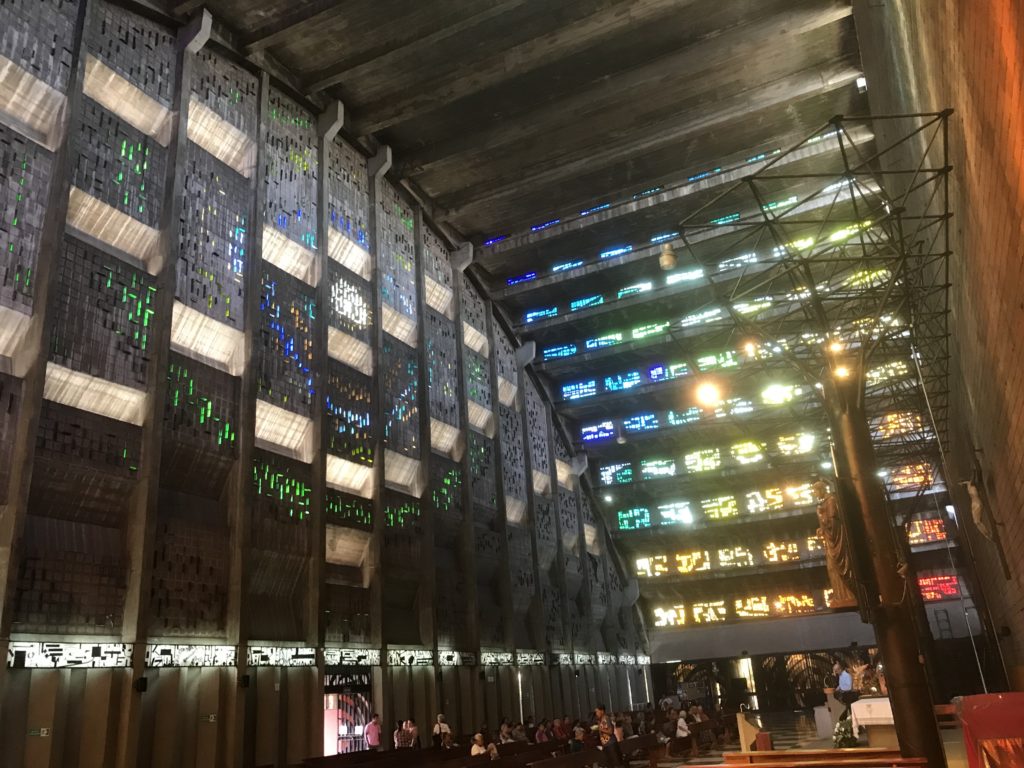
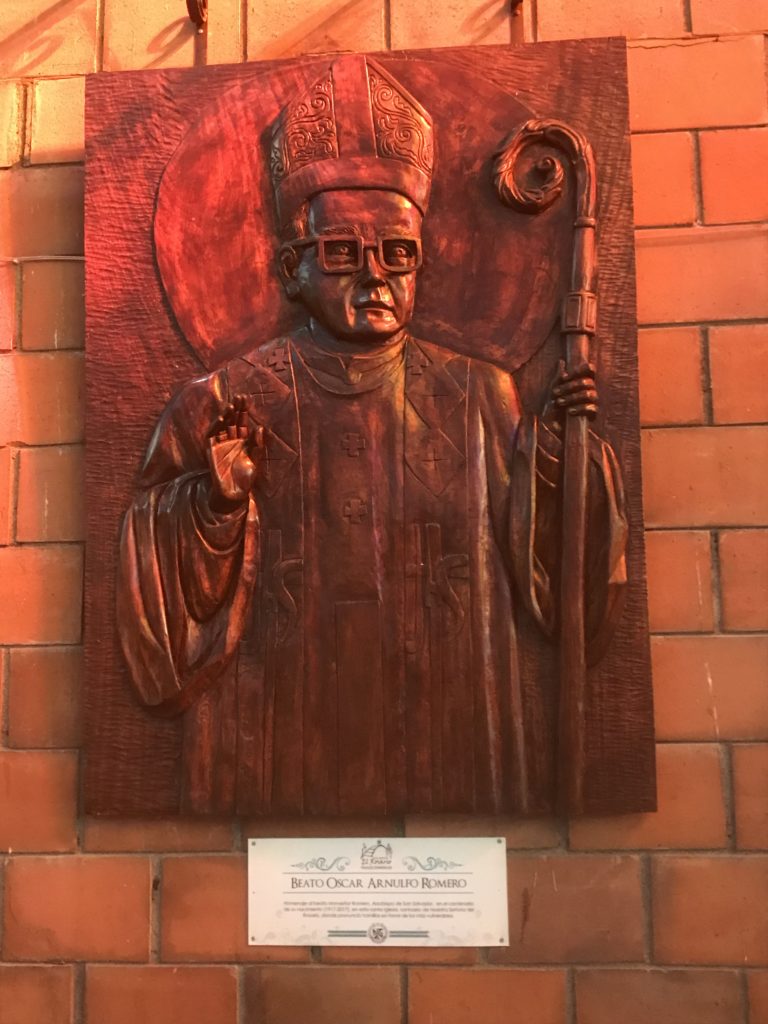
In some way, this attitude reversal is similar to the experiences of the two protagonists in « Tyrant Memory » by Horacio Castellanos Moya. Périclès is the son of a coronel who starts his career at the military academy before serving as a diplomat and as secretary for a cruel dictator. But when he shares the last moments of a revolutionary destined to the firing squad, the latter tells him: « You are going to be one of us ». And indeed, Périclès leaves the service of the regime, writes for an opposition newspaper, and when he is not in jail or in exile, serves a fervent supporter of the revolution.
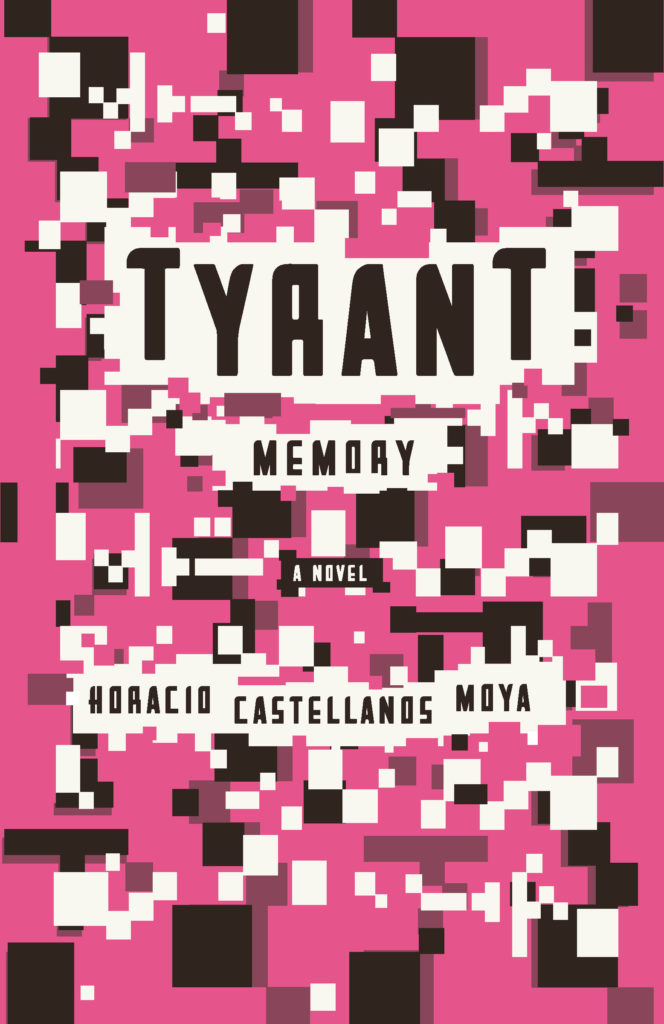
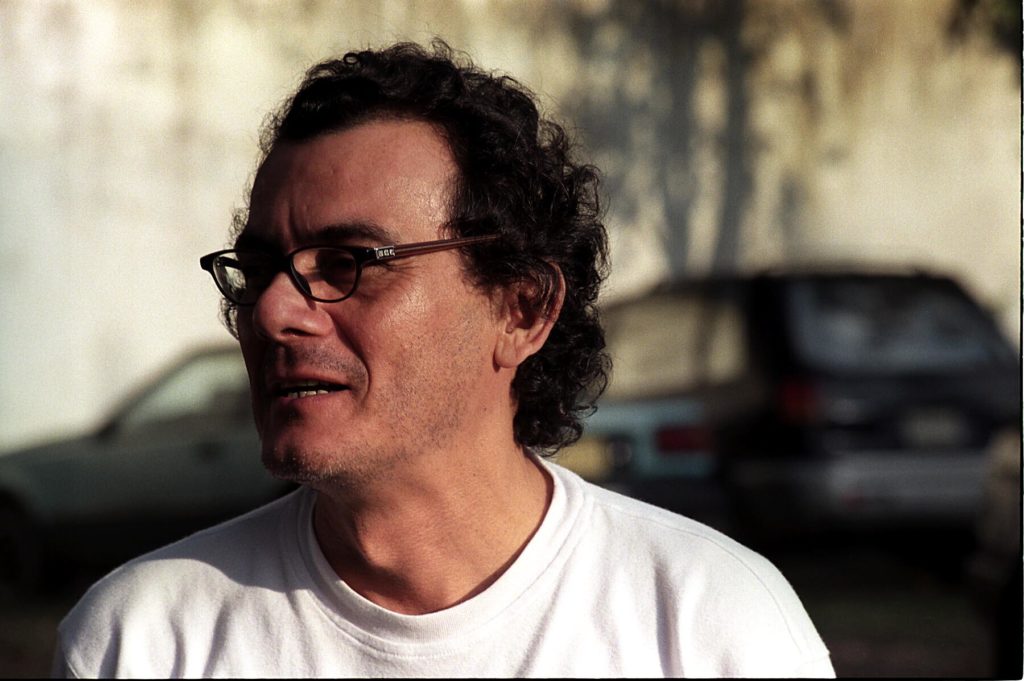
Haydée, his wife, is the daughter of a rich landowner. The novel is built around her diary in which every evening she writes down her memories and emotions. At the beginning her concerns are those of a high society woman: cocktail parties, how to dress, who to invite… But when her husband is thrown in jail and her son must escape after a failed coup, she joins a group of prisoners’ wives and step-by-step gains in courage. She organizes secret meetings during church services to collect and transfer funds for the students planning a strike.
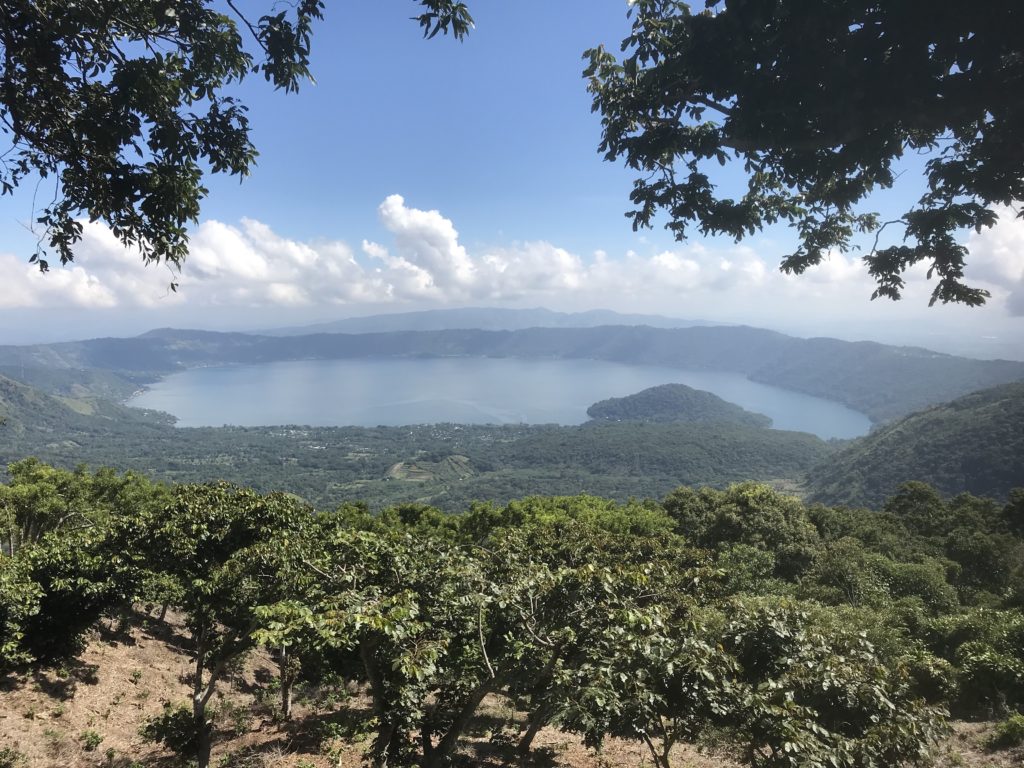
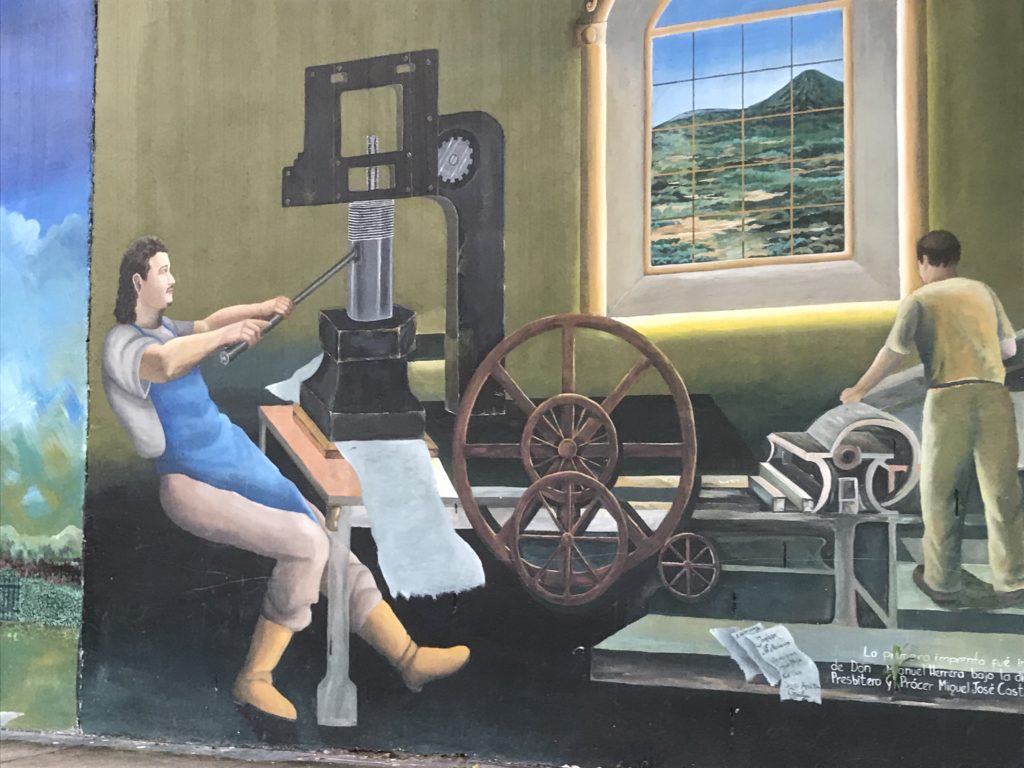
Haydée’s transformation stands in sharp contrast with Laura Rivera’s, the main character in « The She-Devil in the Mirror » another novel by Horacio Castellanos Moya. When Laura learns that her best friend Olga Maria has been murdered by a sort of Robocop who could be linked to the police, she gradually loses her head and falls in a spiral in which all her certainties as a Salvadorian grand lady are smashed: her contacts with the highest levels of power, her many affairs which are intertwined with those of her dear Olga Maria and her family’s fortune. This crash is described with humor and a jubilant verve by a writer who knows his country’s failings, himself had to live in exile, but keeps paying homage to it.

